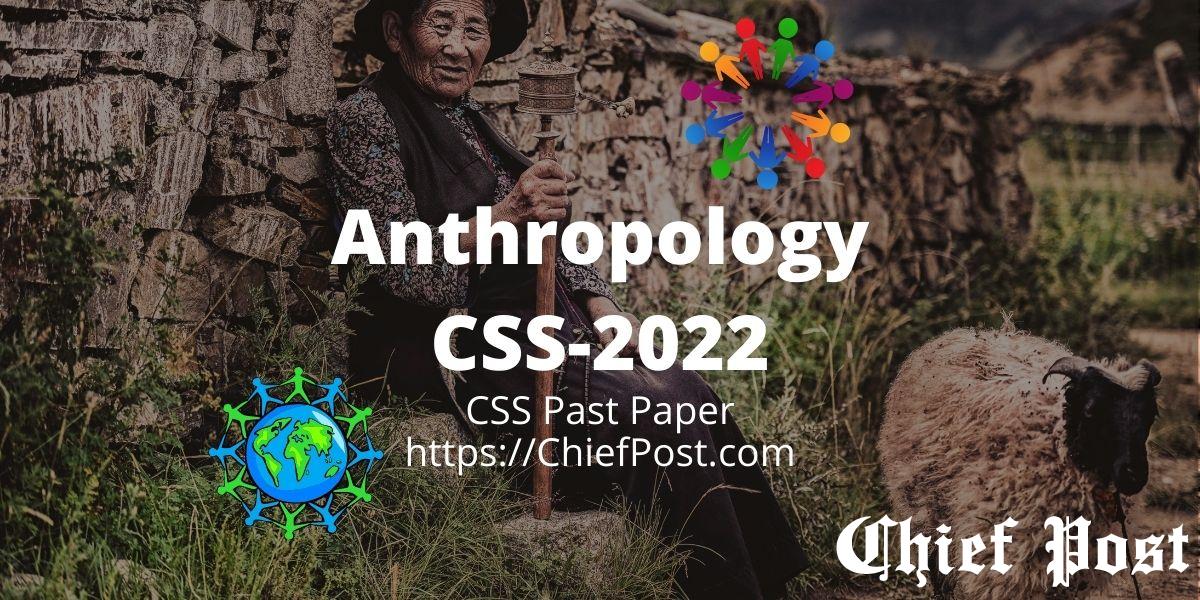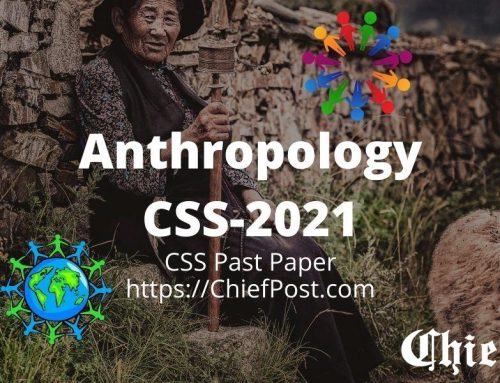
Anthropology 2022 — CSS Past Paper
FEDERAL PUBLIC SERVICE COMMISSION
COMPETITIVE EXAMINATION-2022
FOR RECRUITMENT TO POSTS IN BS-17
UNDER THE FEDERAL GOVERNMENT
ANTHROPOLOGY
TIME ALLOWED: THREE HOURS
PART-I(MCQS): MAXIMUM 30 MINUTES
PART-I (MCQS) MAXIMUM MARKS = 20
PART-II MAXIMUM MARKS = 80
NOTE:
- (i) Part-II is to be attempted on the separate Answer Book.
- (ii) Attempt ONLY FOUR questions from PART-II. ALL questions carry EQUAL marks.
- (iii) All the parts (if any) of each Question must be attempted at one place instead of at different places.
- (iv) Candidate must write Q. No. in the Answer Book in accordance with Q. No. in the Q.Paper.
- (v) No Page/Space be left blank between the answers. All the blank pages of Answer Book must be crossed.
- (vi) Extra attempt of any question or any part of the attempted question will not be considered.
PART-II
Q. No. 2.
Anthropology focuses on every aspect of human being through physical anthropology, archaeology, linguistic anthropology and socio-cultural anthropology. Explain. (20)
Q. No. 3.
Distinguish among three major types of food production system i.e. horticulture, intensive agriculture and pastoralism. How agriculture can be developed to bring about economic prosperity in Pakistan? (20)
Q. No. 4.
Explain internal and external conflict theories about the emergence of early state societies. Social stratification is one of the defining qualities of the state. Explain. (20)
Q. No. 5.
Explain theory of structural-functionalism of Radcliffe-Brown in which aspects of culture are viewed in terms of the part they play in maintaining the social structure. (20)
Q. No. 6.
Define ethnocentrism and cultural relativism. Discuss the advantages and disadvantages of ethnocentrism and cultural relativism. (20)
Q. No. 7.
Define patrilineal and matrilineal organizations. How patrilineal organization affect the political organization in Pakistan Society? (20)
Q. No. 8.
Define social stratification. Differentiate between caste and class societies with reference to examples from South Asia.
**********










